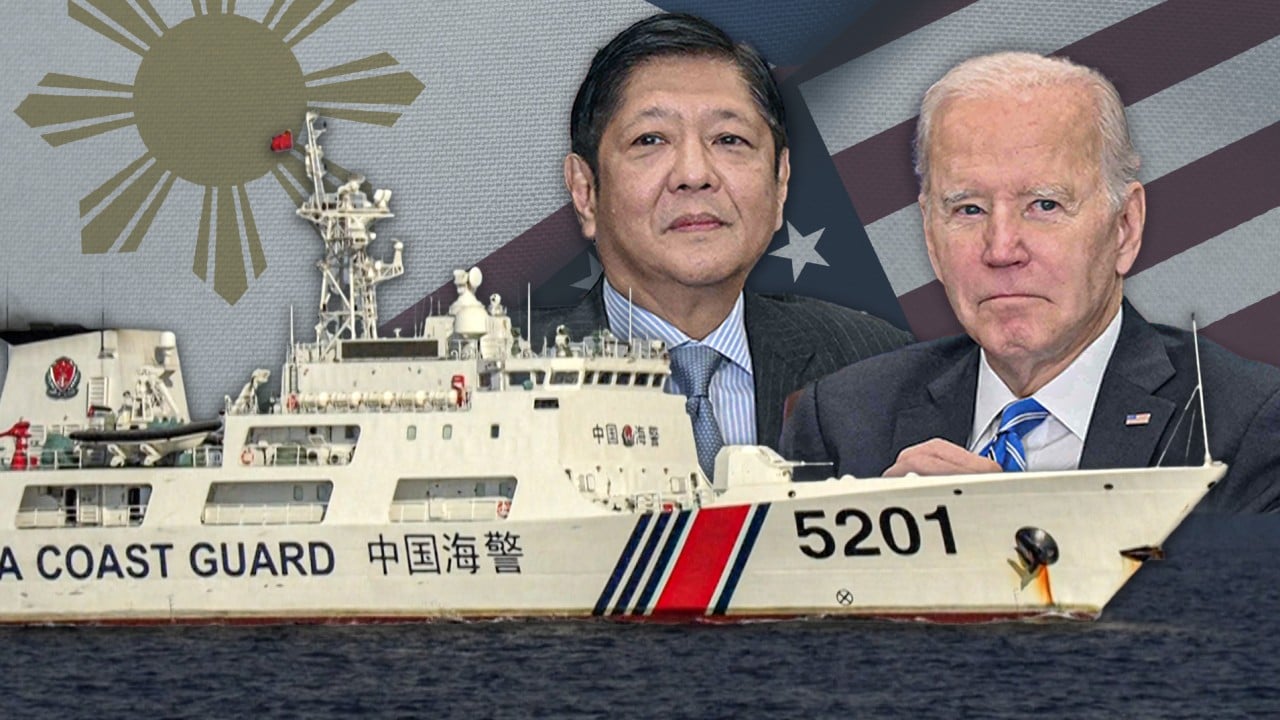
‘Audio deepfake’ of Marcos Jnr ordering military action against China prompts Manila to debunk clip
- In the clip, a fake voice of the president is heard saying he can no longer allow Filipinos to get hurt by China’s actions
- Marcos Jnr’s office says ‘no such directive exists’ and Manila is working with various agencies to combat deepfakes
“We cannot compromise even a single individual just to protect what rightfully belongs to us,” says the voice in the faked audio, which was reportedly released via a YouTube channel with thousands of subscribers. The audio was accompanied by a slideshow of photos showing Chinese vessels in the South China Sea.
The clip comes amid growing tensions between Manila and Beijing due to their frequent disputes in the South China Sea.
Philippine universities defend Chinese students on Taiwan-facing province
The Presidential Communications Office (PCO) issued a public warning about the manipulated media on Tuesday night, confirming it was entirely fake.
“It has come to the attention of the Presidential Communications Office that there is video content posted on a popular video streaming platform circulating online that has manipulated audio designed to sound like President Ferdinand R. Marcos Jnr,” the PCO said in a statement.
“The audio deepfake attempts to make it appear as if the President has directed our Armed Forces of the Philippines to act against a particular foreign country. No such directive exists nor has been made,” it added.
According to the PCO, it is working on measures to combat fake news, misinformation, and disinformation through its Media and Information Literacy Campaign.
“We are also closely coordinating and working with government agencies and relevant private sector stakeholders to actively address the proliferation and malicious use of video and audio deepfakes and other generative AI content,” it said.
‘I felt hurt’: Philippine first lady breaks silence on ties with vice-president
Ramon Beleno III, head of the political science and history department at Ateneo De Davao University in Davao City, said Beijing and its supporters in the Philippines are unlikely to have been behind the circulation of the fake audio as it was not in their interests to stoke tensions further.
“If something will happen in the West Philippine Sea, who will benefit? Neither the Philippines nor China,” he said. The West Philippine Sea is Manila’s term for the section of the South China Sea that defines its maritime territory and includes its exclusive economic zone.
The academic urged individuals behind the video or fanning tensions over the West Philippine Sea to stop such actions as they would not help resolve Manila’s dispute with Beijing.
“We don’t understand why there are people who want trouble. It’s not good to elevate the conflict. We have Balikatan now. There are many troops in the contested waters. Maybe we should not agitate the situation,” he said.
On Monday, the Philippines and the US kicked off their annual Balikatan joint military exercises involving some 11,000 troops from the US and 5,000 from the Philippines, as well as participants from the Australian and French armed forces.
“If the agitation results in a full-blown conflict, we can’t control it any more. As I’ve been saying, we should be rational and cooler heads shall prevail,” Beleno stressed.
On Wednesday, PCO Assistant Secretary Dale De Vera said the viral deepfake could have serious ramifications.
“It’s big news because it’s foreign policy that’s affected there,” he told reporters.
Asked if this was the first time that a deepfake of the president had been created, De Vera said there had been other instances before but nothing as potentially dangerous as the latest incident.
“This is not the first time but this one is serious because the others were just playful in nature, just songs where he [Marcos Jnr] is singing and dancing, but this one is very different because of the topic,” De Vera said.

Taking the matter seriously
Aboy Paraiso, assistant secretary of the Department Of Information And Communications Technology, said Manila would take the deepfake issue seriously.
“We are coordinating with the security sector in this particular scenario that involves national security and public welfare,” Paraiso said, adding that the parties behind the Marcos deepfake could land in jail under the country’s cybercrime law.
Jocel De Guzman, a cofounder of Scam Watch Philippines, a group involved in raising awareness about scams and fraudulent activities in the country, said Manila needs to educate people about online fraud detection, particularly as AI apps become more available.
“What is scary now is that it evolves and is not just copying but more advanced. We cannot stop AI development so we need to educate people about the logic to detect fraud,” he added.
Online users can assess if a media clip is fake by checking its source and examining it, De Guzman said.
“Usually the source is not credible. Check if the audio syncs in the mouth, the face is blurry, and the eyes, because they’re usually unnatural and not moving.”
Duterte drug war trial ‘moving forward’ as ICC calls for Philippine translators
Defence and security officials in the Philippines have long expressed concern about the country’s cybersecurity preparedness.
Last year, Defence Secretary Gilberto Teodoro Jr warned military and security personnel against using apps that harness AI to generate personal portraits, saying they could be “maliciously used to create fake profiles that can lead to identity theft, social engineering, phishing attacks, and other malicious activities”.
Three lawmakers – Cavite representatives Lani Mercado-Revilla and Ramon Revilla III and Agimat Rep. Bryan Revilla – have sought through a bill heavier penalties against crimes committed using deepfake technology.
The draft bill defines a “deepfake” as “any audio, visual or audio-visual recording created or altered through technical means, such as video recording, motion-picture film, sound recording, electronic image, or photograph, which are so convincing that a reasonable person would mistake it for an authentic representation of an individual’s speech or conduct.”
Illegal deepfakes can “infringe on copyrights, violate data protection, defame individuals, and intrude upon privacy”, according to the bill.

